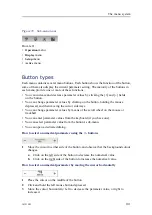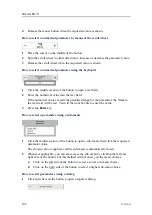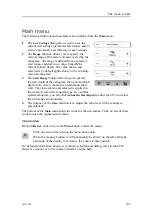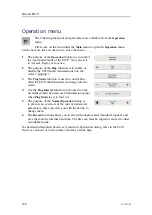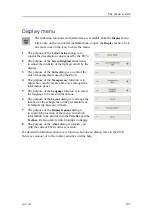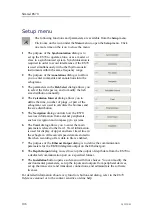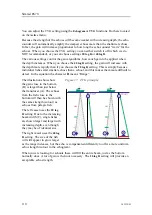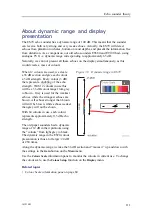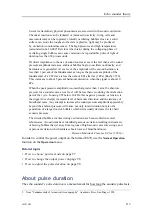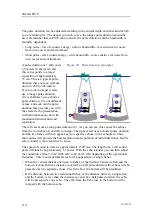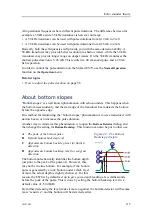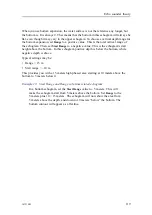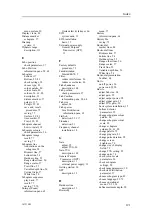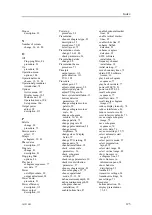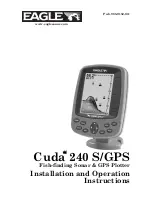
Echo sounder theory
All operational frequencies have different pulse durations. The difference between for
example a 50 kHz and a 38 kHz transducer is however not large:
• A 50 kHz transducer can be used with pulse durations from 0,12 mS to 2 mS
• A 38 kHz transducer can be used with pulse durations from 0,26 mS to 4 mS.
Basically, both these frequencies will provide you with the same detection ability. A
50 kHz transducer may provide better resolution in shallow waters, while the 38 kHz
transducer may provide longer range on deeper waters. On the 38 kHz transducer the
shortest pulse duration is 0,26 mS. This results in a 40 cm sound pulse and a 20 cm
fish separation.
In order to control the pulse duration on the Simrad ES70, use the
Normal Operation
function on the
Operation
menu.
Related topics
•
How to adjust the pulse duration
on page 98
About bottom slopes
“Bottom slopes” is a well known phenomenon with echo sounders. This happens when
the bottom rises suddenly, and the start edge of the transducer beam detects the bottom
before the opposite edge.
One method for minimizing the “bottom slopes” phenomenon is to use a transducer with
narrow beam, or to increase the pulse duration.
Another way to minimize this phenomenon is to open the
Bottom Detector
dialog, and
then change the setting for
Bottom Backstep
. This function can also be put to other use.
Figure 40
The Bottom
Backstep principle
-50 dB
-70 dB
-30 dB
(CD010217-003)
A
The peak of the bottom pulse
B
Default bottom backstep level
C
Approximate bottom backstep level for flatfish
detection
D
Approximate bottom backstep level for seagrass
detection
The bottom pulse basically identifies the bottom depth
just prior to the peak of the pulse (A). However, this
may not be the true bottom. For example, if the bottom
pulse is generated by a rock bottom under a thick layer
of mud, the actual depth is slightly shallower. For this
reason, the ES70 is by default set up to give you a depth reading a few milliseconds
before the peak of the pulse. This is done by setting the bottom backstep level to a
default value of -50 dB (B).
By further decreasing the level (make it more negative) the bottom detector will become
more “sensitive”, and the bottom will be detected earlier.
343539/B
115
Summary of Contents for ES70 - DOWNLOAD AND INSTALLATION REV B
Page 2: ......
Page 128: ...ISBN 13 978 82 8066 118 0 2010 Kongsberg Maritime AS ...

